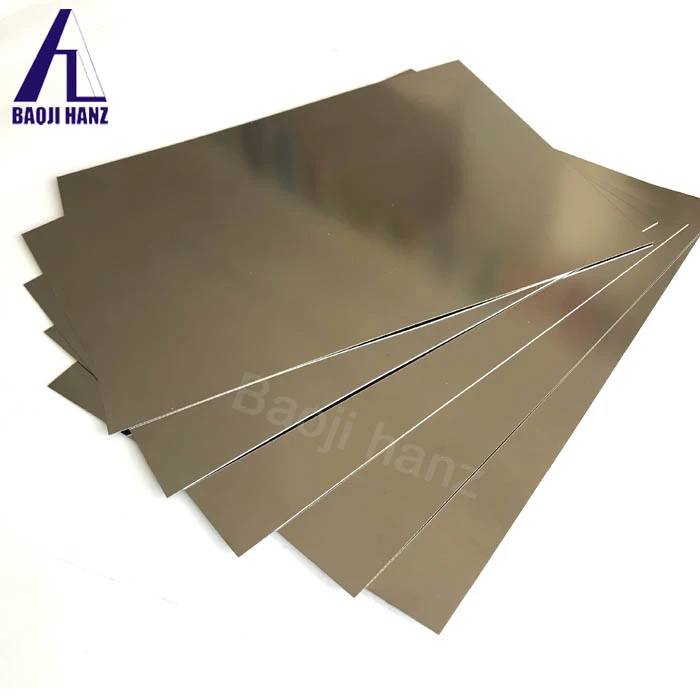What is nitinol wire made of?
2024-07-26 12:10:28

What metals are used in nitinol wire?
Nitinol wire is primarily composed of an alloy made from nickel (Ni) and titanium (Ti), typically in roughly equal atomic percentages. This alloy is commonly referred to as Nickel Titanium or NiTi. The specific composition of Nitinol can vary slightly depending on the intended application and desired properties. In addition to nickel and titanium, small amounts of other elements like copper (Cu) or chromium (Cr) may be added to tailor the alloy's characteristics. These elements can influence factors such as corrosion resistance, biocompatibility in medical settings, or mechanical properties like stiffness and elasticity. The combination of nickel and titanium gives Nitinol its distinctive properties such as shape memory and superelasticity, which are essential for its versatile use in various industries.
How is nitinol wire manufactured?
Nitinol wire is manufactured through a specialized process that involves several key steps:
Melting and Alloying: Nickel (Ni) and titanium (Ti) are melted together in precise proportions to form a homogeneous alloy. Additional elements may be added to achieve specific properties.
Hot Working: The alloy is then subjected to hot working processes such as rolling or extrusion to form the wire into the desired shape and dimensions. This step helps align the crystal structure and improve the mechanical properties.
Cold Working: The wire undergoes cold working processes such as drawing through dies to further refine its dimensions and improve its strength and ductility.
Heat Treatment: The wire is heat-treated to set its shape memory and superelastic properties. This involves heating the wire to a specific temperature and then cooling it rapidly or slowly to stabilize the desired phase structure.
Surface Treatment: Surface treatments such as polishing or coating may be applied to improve corrosion resistance or enhance biocompatibility, depending on the intended application.
Quality Control: Throughout the manufacturing process, rigorous quality control measures ensure that the Nitinol wire meets precise specifications for mechanical properties, dimensional accuracy, and performance characteristics.
This manufacturing process results in Nitinol wire with its unique combination of shape memory, superelasticity, biocompatibility, and other tailored properties, making it suitable for a wide range of industrial and medical applications.
What metals are used in nitinol wire?
Nitinol wire is primarily composed of a nickel-titanium alloy, often referred to as NiTi or Nickel Titanium. This alloy is typically made up of approximately equal parts nickel and titanium by atomic percentage. The exact composition can vary depending on the specific application and desired properties. In addition to nickel and titanium, small amounts of other elements may be added to modify the alloy's characteristics. For instance, elements like copper (Cu) or chromium (Cr) can be included to enhance corrosion resistance or biocompatibility in medical applications. The combination of nickel and titanium gives Nitinol its unique properties such as shape memory and superelasticity, making it valuable across industries ranging from aerospace and robotics to medical devices and consumer electronics.
How is nitinol wire manufactured?
Nitinol wire is manufactured through a specialized process involving several key steps:
Melting and Alloying: Nickel and titanium are melted together in precise proportions to form a uniform alloy, typically around 50% nickel and 50% titanium by atomic percentage.
Hot Working: The alloy is then hot worked through processes like rolling or extrusion to form an initial shape, such as a rod or tube. This step helps refine the microstructure and improve the alloy's mechanical properties.
Cold Working: The material undergoes cold working processes such as drawing through dies to reduce its diameter and further refine its mechanical properties. This step increases the strength and ductility of the wire.
Heat Treatment: Critical to Nitinol's unique properties, the wire is heat-treated to set its shape memory and superelastic characteristics. This involves heating the wire to a specific temperature and then cooling it under controlled conditions to stabilize the desired phase structure (austenite or martensite).
Final Processing: After heat treatment, the wire may undergo additional processes such as cutting to length, surface polishing, or coating to enhance properties like corrosion resistance or biocompatibility.
Quality Control: Throughout the manufacturing process, stringent quality control measures ensure that the Nitinol wire meets precise specifications for mechanical properties, dimensional accuracy, and performance requirements.
This manufacturing process results in Nitinol wire with its distinctive properties, making it suitable for diverse applications across industries such as aerospace, medical devices, robotics, and consumer electronics.
What are the medical applications of nitinol wire?
Nitinol wire is widely utilized in various medical applications due to its unique properties. It is commonly used in:
Stents: Nitinol's ability to expand and return to its original shape makes it ideal for vascular and non-vascular stents, ensuring vessel patency and structural support.
Guidewires: In minimally invasive surgeries, nitinol guidewires navigate through intricate pathways within the body due to their flexibility and shape memory.
Orthodontic Wires: Nitinol wires apply continuous, gentle force for teeth alignment, enhancing orthodontic treatments.
Surgical Instruments: Nitinol's resilience and precise shape recovery enable the development of surgical tools for precise movements and durability in various procedures.
Implants: It is used in bone anchors, sutures, and clips due to its biocompatibility, corrosion resistance, and ability to adapt to body movements.
Neurovascular Devices: Nitinol is employed in devices for treating aneurysms and other neurovascular conditions, benefiting from its navigational capabilities and shape memory.
These applications highlight Nitinol wire's critical role in advancing medical treatments by providing effective, reliable solutions for both clinicians and patients.
In conclusion, nitinol wire's composition of Nickel and Titanium, combined with its manufacturing processes and medical applications, underscores its importance in modern healthcare. As technology advances and research continues, the versatility and reliability of nitinol continue to expand its role in enhancing medical treatments worldwide.
References:
- Santosh, P. (2017). Nitinol in Medical Applications. ASM International.
- Duerig, T. W., et al. (1999). Engineering Aspects of Shape Memory Alloys. Butterworth-Heinemann.
- Ma, N. (Ed.). (2013). Shape Memory Alloy Engineering: For Aerospace, Structural and Biomedical Applications. Woodhead Publishing.